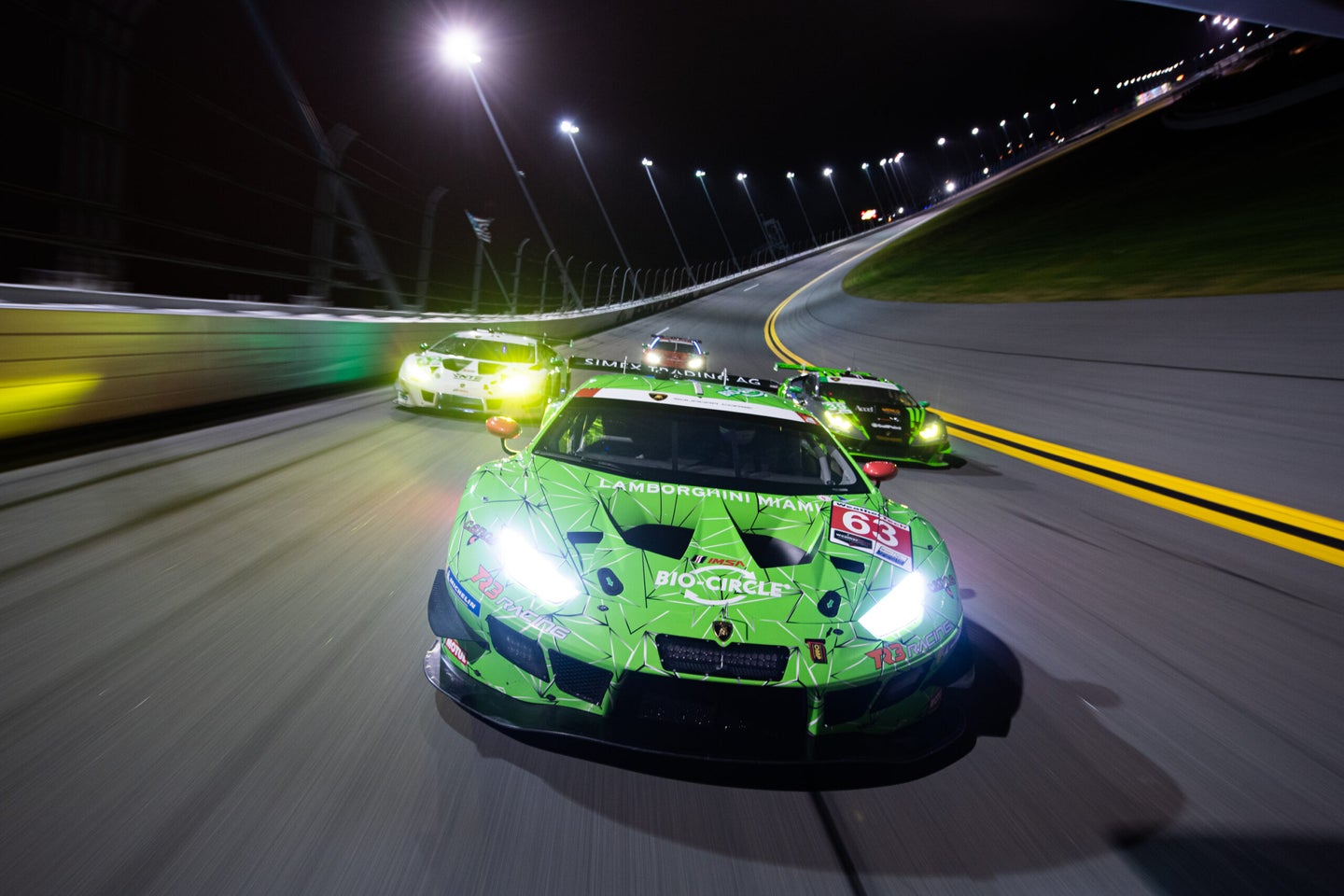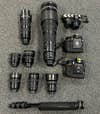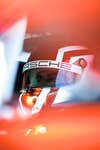Motorsports photographer Jamey Price on how to shoot a 24-hour endurance race
Jamey price just wrapped up shooting his 15th Rolex 24, an annual day/night-long race held at Daytona International Speedway.

Jamey Price is a professional motorsports photographer with well over a decade of experience capturing things that go “zoom.” He’s photographed some of the biggest automotive racing events in the world, with work published in Motor Trends, Road & Track, Car & Driver, Sports Illustrated, Maxim, and the New York Times, to name just a handful. And in 2019, he was named Motorsport Photographer of the Year by the National Motorsports Press Association.
We recently caught up with Jamey, who just completed shooting his 15th Rolex 24, an annual 24-hours race held at Daytona International Speedway in Daytona Beach, Florida.
Here we chat about how he prepares for an event like the Rolex 24, where he stands on the DSLR vs. mirrorless debate, how to stay safe when shooting from the pit, and what aspiring motorsports photographers can do to jumpstart their careers.
Shooting any 24-hours event sounds absolutely grueling. I saw this was your 15th one. How do you prepare both mentally and physically for something like this? I bet you bring a lot of snacks.

It is as grueling as it sounds. People kind of forget that a 24-hour race isn’t just a 24-hour day. It’s closer to 38 or 40 hours because no one just wakes up and goes to work when the green flag drops. I was up at 6:30 am on Saturday morning and at the track and working by 8 am—we didn’t leave the track until 6 pm on Sunday. There really is no way to mentally prepare for it. I’ve done enough of them by now to know the pain and suffering I’m in for, but making sure you’re hydrated in the days leading up to the race is key. I also personally choose to do no caffeine of any kind during the race. The peaks and valleys of energy are really difficult. So keeping that energy level up in artificial ways leads to deeper valleys and smaller peaks. As for snacks, I bring a box of power bars and a few “happy” snacks but, I’ve learned not to overdo it on the snacks.
What kind of gear are you using to cover a 24-hour race? I’d imagine having ample batteries and memory cards is key?

I have three camera bodies and a whole variety of lenses I bring with me. The two main bodies are DSLRs and the backup is a mirrorless camera. The lenses range from a 500mm f/4 down to a 14-24mm f/2.8. Various lenses I use in different situations. What I bring to pitlane or wander the paddock with, is not what I bring trackside generally. Memory cards are all LEXAR CFExpress B cards. During the race itself, I will usually come back to the media center and ingest and send [files] to clients every few hours. So when I do come back and sit down, I’ll pop the batteries on the charger and be back out trackside an hour later. The biggest thing is remembering to put the batteries on the charger as soon as you sit back down at the desk.
So you’re shooting with a mix of DSLRs and mirrorless? What are your thoughts on the latter, do you eventually plan to go all-in on mirrorless?

For the moment, I’m very happy with DSLRs. Of course, there are advantages to mirrorless, but there are also advantages to DSLRs. Battery life is one key one, and despite how crazy people may think the idea, the super-light kit that mirrorless offers can actually be a disadvantage, especially when you are panning with slow shutter speeds. Any breeze or wind can really move a light lens or camera around more than a heavier lens and body. [Using the latter] results in sharper photos. I do plan to switch to mirrorless, as we all will be forced to one day, but the cost would be enormous to do a full switch at the moment.
Are you mostly photographing the race from one location, or do you have some freedom to move around? Is there a particular position you like to shoot from best?

We are constantly moving from location to location. I am lucky that my biggest client, Lamborghini, provides me with a scooter to move around the track. But there is still a tremendous amount of walking involved—kneeling, standing, walking to another spot, changing settings and lenses. I won’t stand in one location and do one “type” of photo for more than a few laps.
But the other joy of shooting a 24-hour race is that you are quite literally in a photographer’s paradise in chasing the sun around a venue. We start the race in mid-afternoon, move through into golden hour and sunset, blue hour, and then, of course, the long cold 13 hour night, into blue hour again, sunrise then the doldrums of late morning light. It can be extremely rewarding if you plan it properly.
What kinds of images are you looking to make when you cover a race? Are there certain “shots” everyone is expecting?

Most of my clients know me, know my style, and want me to cover the race however I want to cover it. [They] trust me. But more generally, it is a storytelling job, like all photography is. It’s not unlike a wedding photographer’s job in that it’s about documenting the day in all aspects, the venue, the weather, the people, and the joy and sorrow that comes with covering a sport. Not everyone can be a winner, and inevitably there are losers. So you’re trying to tell all of those things in photographs, in one weekend. And then the next weekend, the sport moves to a new location, a new event, and you have to do it all over again.
How do you stay safe when covering something as dangerous as motorsports? I take it you’re occasionally pretty close to the action?

Related: Tips from a pro: Racing Photographer Jamey Price
Some tracks are a little more “hairy” than others. But I was always something of an adrenaline junkie. It is a huge rush to be standing in the pitlane in the middle of the action, cars coming at you even at a mind-altering 40-60mph, which is slow in terms of race car speed, but I challenge anyone to walk through a parking lot with 61 cars doing 40-60mph coming past your feet or inches away from you.
On pitlane, we are required to wear an FIA-rated (FIA is the international sport’s governing body) fire suit which would protect me for a certain period of time (seconds) if I was standing near a car that went up in flames in my vicinity—as well as a helmet, which is more for optics of safety than actual safety.
However, when you’re trackside, some tracks are more exciting to shoot than others are. Places like Monaco are a different animal than somewhere like Daytona. In Monaco, the cars can be inches away from you, and in Daytona, you’re never really closer than 40-60 feet. But you always want to have an escape route in the back of your head in case you need to run for your life. A lot of the places we stand can be dangerous, but having experience and racing knowledge and a general understanding of crash physics learned through experience and watching racing does help.
You mentioned that you’re sorting and sending photos during the race itself, rather than after, talk me through that. And how many photos would you say you shoot over the course of a race like this?

Yes, we do ingest and send during the event. With the advent of social media has come extreme time expectations on delivery. I will usually go and do a full batch send of “edited” images to my clients every 2-4 hours. Depending on the time of day. Obviously, I’m not going to leave an amazing sunset to go deliver a mid-afternoon shot to a client. But because of Instagram stories and posts and tweets being the way that most teams and manufacturers and drivers communicate with their fans and update them during an event, they expect images regularly. Producing a gallery of images at the end of a weekend or days after an event is essentially useless to most clients. They need them during the event and multiple times during the event.
The number of images I shoot during an event can vary widely based on weather and how many clients I am covering for a weekend. During the Daytona 24 this year I took 33,376 images, which is an insane number on the surface, but when you actually boil it down to how many hours of continuous work I am doing, it is well under 1000 images per hour. That includes pre-race activities, driver autograph sessions, the grid walk, then the actual 24-hour race itself, followed by the post-race celebrations, which are especially heavy if one of your clients wins the race. All of the images are delivered within an hour or two after the race. Aston Martin and my team client, Wright Motorsport, needed and had images to use for social minutes after the podium had happened.
Are there any wild stories you can share from covering past 24-hour races? Any favorite shots or moments?

Each 24-hour race is unique. I haven’t covered two that are the same. We had 15 hours of rain (and cold) one year at Daytona. I also once had a client leading the 24 hours of Le Mans in France, the world’s most famous endurance event, and the car broke down on the very last lap of the race, with about 4 minutes left on the clock. It was gut-wrenching in a way I can’t really describe because you are truly part of the team. I am friends with the drivers, mechanics, team management, and media communications staff. It is a family, and when it goes well. It is so much fun, but when it all comes apart in the last minutes, you feel it through all of your soul. You’re at the limit of mental fatigue and physical exhaustion. Even when it’s all going well, the feeling of being awake for 35+ hours without sleep or proper nutrition is even more intense than being intoxicated but more physical with the pain you feel in your knees, lower back, and shoulders. But I love endurance racing. It is the essence of motorsport. These events feel like the super bowl for racing. The fanfare and anticipation are something that’s hard to describe unless you’ve been to one.
What advice would you give someone looking to get into motorsport racing photography?

The advice I give to those looking to get into motorsport photography is to go to events as a fan regularly. But small events are better than big ones simply because the access is better, the ticket prices are lower and the atmosphere can be better and easier. In motorsports, we are lucky that the event organizers encourage fans to bring cameras and cover the race for fun. I don’t know of other sports that do that. Certainly not golf, soccer, football, or the NBA. You’ll never be able to walk into Augusta with a 500mm lens, but at most motorsport events, they encourage fans to bring their cameras and have fun. The access is actually shockingly good.
For most IMSA Sportscar events, a fan with a ticket has access to wander the paddock and garage areas, see and touch the cars, talk to the drivers and then enjoy world-class racing. So go to events and pretend like you’re there covering it for work. Pick a team or driver and cover that team like you’re their photographer. Don’t just take photos of the car on the track. Cover as much of it as you can as a fan.
Is there anything you’d like to add?

You can find more of my work on social media (@jameypricephoto on Instagram, Twitter, Tiktok) and on the web at www.jameypricephoto.com.
